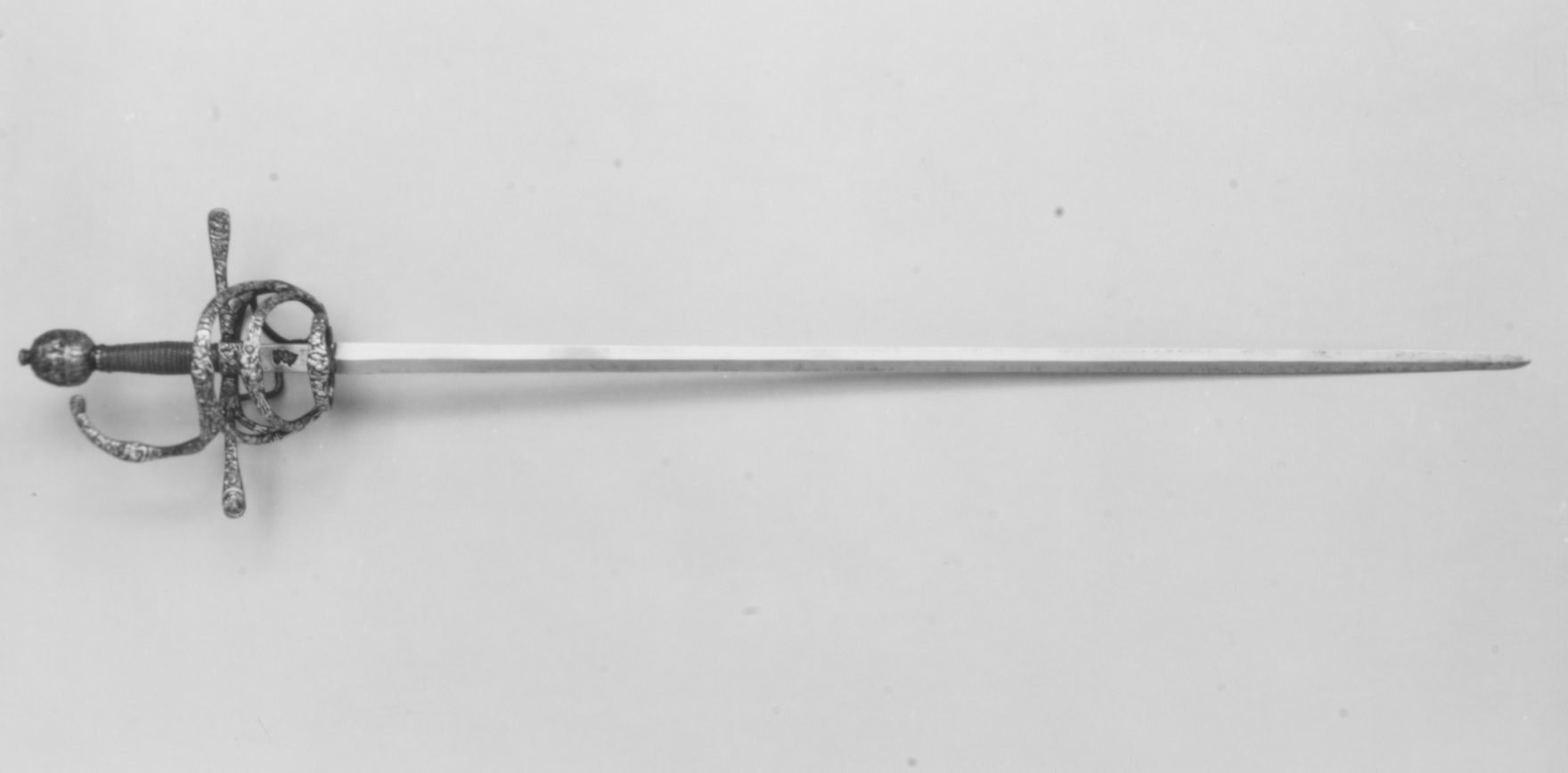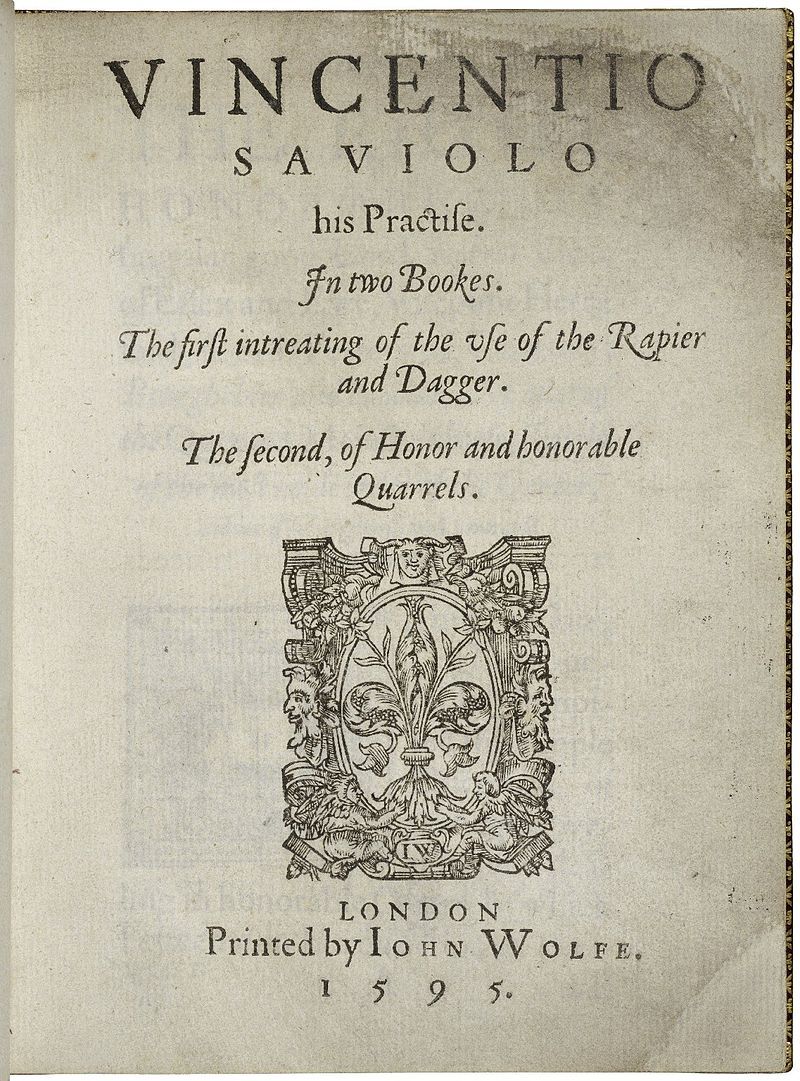Tudor Martial Arts
by Jason Hulott
Fashion, Function and Form
This article explores the change in personal weaponry and associated training, the growth of sword schools across London and the establishment of the Company of Maisters of the Science of Defence.
The Tudor era sees one of the biggest changes in military combat and weaponry of the medieval period. Some of this is technological advance and some is purely down to fashion. In this article we will look at personal combat and weaponry, so not military warfare, more individual personal self-defence.
We will break this down into three sections
- Changes in personal weaponry and the need to use them
- Learning to fight
- Regulation of training
Changes in Personal Weaponry and the Need to Use Them
The Tudor period sees a shift from arming swords to side swords and rapiers. An arming sword is a single-handed sword we commonly associate with knights and early medieval combat of sword and shield. Arming swords, while available in different shapes, all tend to have simple pommels, grips, cross guards and a double- edged blade. You see this on effigies and statues.

The 16th century gives us a shift in sword design, it happens gradually so we can’t pinpoint exactly when this happens, but the arming sword gets slowly replaced with a different weapon - The side sword / rapier. These are two separate sword types, and we will discuss why we are talking about both later, but for now here are some differences between the old sword type and the news ones.
Among the changes we see develop during the Tudor period:
- The guard transformed from a simple cross hilt to a more complex guard
- The blade becomes narrower than what was typically of the arming sword
- The blade also becomes longer and has a much more pronounced point
- The sword becomes more appealing to the eye
This design change comes from Continental Europe and predominantly Italy. The wearing of one of these types of swords was now part seen as a fashion and status symbol whereas the arming sword of old was purely a functional tool.

The wearing of a rapier or sidesword sets you apart in Tudor England as you are now fashionable. Something Henry VIII was very keen to promote. The other thing a sword like this conveyed was status and money. These swords weren’t cheap.
A sword in and of itself wasn’t a protection or deterrent. In Tudor England, civilians were now wearing swords in civilian clothing. These people weren’t military or soldiers.
But owning a sword, wearing a sword, and using it, were very different things. So with this new fashionable item came the need to learn how to use it. Wearing something so distinctly expensive, at least to some people, would no doubt make you a target for assault or robbery.
So not only did you want to be fashionable and have an expensive sword but you also needed to know how to use it and this is where self defence schools grew in popularity.
Remember, these people learning to fight aren’t soldiers or knights, they could be wealthy merchants, traders, or nobles, that had no military experience.
So, schools were setup to teach them, and pupils paid to learn how to defend themselves.
Learning to fight
The Tudor world we are discussing was based around London, so we will focus on the London fencing schools which had sprung up during this time, bringing many sword teachers from across Europe to set up shop in London. We see a big influx in Italian teachers, maybe because the Italian rapier was so popular, and who better to learn from. London becomes a hive of fencing schools. To reiterate, this is not to teach people how to fight militarily, but as a means of self-defence.
The 16th century seems to be the start of a formal self defence industry. While we are focussing on Tudor England, fight and fencing schools appear all across Europe.
Let’s have a brief look at some of the teachers who setup in London.
London Fight Schools - Overview of the Main Players
George Silver
George Silver was a gentleman of England during the late 16th and early 17th centuries, who is known for his writings on swordplay. Silver championed the native English martial arts while objecting on ethical and technical grounds to the fashionable continental rapier systems being taught at the time.
He particularly disliked the immigrant Italian fencing masters Rocco Bonetti and Vincent Saviolo, Silver saw the rapier as an incredibly dangerous weapon, which did not offer the user sufficient protection during a fight. Silver favoured the side sword which he felt was much more of an Englishman’s weapon.
A major difference between Silver's system and Italian rapier fencing lies in his not advocating the use of the lunge but rather the use of a gathering step, the normal fencing step in which the feet do not pass.
A large chunk of Silver's Book, The Paradoxes of Defence, is aimed at discrediting Italian immigrant fencing schools in London. He spent a lot of time challenging Saviolo to duels. Saviolo declined them all.
Giacomo di Grassi
Grassi was one of the three premiere Elizabethan masters. He published his book, His True Arte of Defense, in 1570 and 1599. Grassi analysed lines of attack and defense that is still being used in modern fencing to this day. He is called the forefather of the smallsword and was one of the first masters of fence to hint at using the sword to parry attacks. He also was a great proponent of using the dagger as a defensive weapon. In effect, using a dagger in your off hand as a shield.
Rocco Bonetti
In 1570 this Italian master setup a school of fence at Blackfriars in London. He advocated the use of the rapier for thrusting as opposed to cutting or slashing when engaged in a duel. It is said he famously claimed that he could thrust an Englishman upon any button on his doublet.
He seems to be one of the most well known fencing schools masters and at the same time unknown. He did not write any treatise nor did he publish any works on his system. He was killed when accepting a duel outside his school – one of many. His school was taken over by his son, Jeronimo, who was a friend of another fencing master who made his way to England, and perhaps most famous of all, Vincent Saviolo.
Vincent Saviolo
Saviolo arrived in England from Padua in 1590. He is considered one of the premiere Elizabethan masters. He taught a mixture of Italian and Spanish theory and practice. Like Bonetti, he taught of the superiority of the thrust over the cut. He published a book, His Practise, in Two Bookes, which covered honour as well as practical swordsmanship.
Saviolo seems to have been a favourite sword master with Elizabeth I. He seems to appealed to the nobility and wealthy in London who would have been able to afford to train at his school.

Regulation of Training
Henry VIII ascends the throne on April 21st 1509. As a young King, he is very active and a great huntsman and loves the Tournament. He loves the martial life and is known to wrestle. We remember the famous “story” of Henry wrestling and losing to Francis I the King of France at the Field of the Cloth of Gold in June 1520. When the King shows such martial prowess, it is no wonder that his subjects were too.
So much so, in fact, that Henry establishes the Company of Maisters of the Science of Defence. The company was created to oversee the standards of self-defence training carried out in Tudor London. It mainly covered rapier / side sword fencing but wider than this covered quarterstaff, dagger, and broadsword. The company wanted to be a guild – a protected monopoly in London. It applied a few times but was rejected.
The Company used a system of prize playing to regulate training and access to becoming a teacher. Prize playing was used in the same way we use modern martial arts gradings. But rather than coloured belts, it was a method of testing a student’s skill. However, this took time. Transition between one level to the next could take a minimum of seven years each and progression in the system – Free Scholar, Scholar, Provost, then finally Maister. If you managed to progress to Maister, it has taken you a minimum of 28 years. It was a very serious business.
To become a Maister of the company allowed you to then become an independent teacher and open your own fencing school.
The company loses favour under the rule of James I with his passing of anti-monopoly laws and it disappears from history.
Summary
Hopefully this very brief look at Tudor martial arts and the protagonists of the period, will highlight the huge change that happened in this short period of history. It should provide people with some guidance to help further research. There are a number of historical fencing schools across the UK that are recreating these arts. So, if the idea of learning how to fight like a Tudor appeals, then there are places to do that. Failing that, most of the sword masters that wrote books during this period that I discuss above are available to buy with commentary and analysis.
